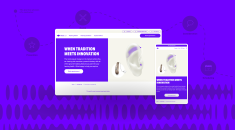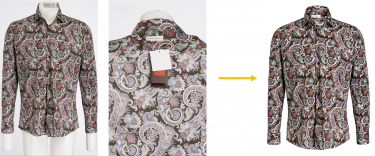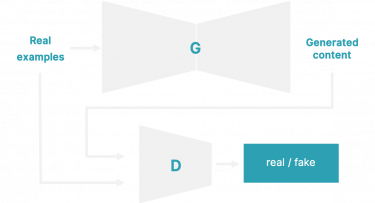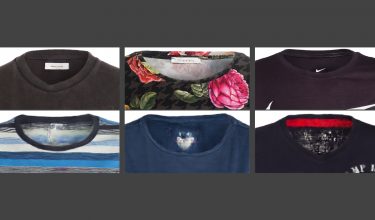
WS Audiology
autoretouch GmbH
With autoRetouch we were able to overcome the limits of the status quo: The goal was to completely automate the production of the so-called "Ghosted Mannequin Pictures". With GANs this should be possible for the first time. If you want to learn how to work with cutting-edge technologies in the field of data science, then you've come to the right place!
In the field of eCommerce, product images are the only point of contact between a customer and the product. For this reason, the images must create a perfect impression on the customer. This is especially true when it comes to the fashion industry, where the appearance of a product is one of the strongest driving factors for purchase decisions.
For this reason, image processing can be considered a key element of eCommerce for the fashion sector. High quality standards while maintaining high efficiency and reducing costs at the same time is therefore a major challenge. For this purpose, autoRetouch has developed a platform that contributes to automated image processing, where users can pre-define their own workflows to benefit from the AI capabilities of the software. This is the first time that you have the possibility to edit your images with minimal effort and without repetitive workflows.
“
[...] while the artistry in the creation of the product pictures themselves has evolved, the retouching process is pretty much the same as it was years ago.
“
One of the problems of fashion e-commerce is that a simple photo of the clothing item is not enough. Customers also want to get a taste of how their favorite piece of clothing will fit. Unless the clothing is to be worn by models, which can distract attention from the item itself, at least the contours of a body should still be recognizable. In the so-called “Ghost Mannequin Product Pictures”, only the clothing is visible and it seems to be worn by a ghost.
This kind of representation seems to be very effective in triggering purchase decisions. Unfortunately, the manual process of creating the images is complex and time consuming. autoRetouch has developed an optimized workflow especially for this purpose, reducing the effort of post-processing to the joining of two images. Here in their blog the process is explained in more detail.

We tried to completely automate the process of developing Ghost Mannequin Product Pictures, i.e. to develop an AI that can combine two images in such a way that the resulting picture looks realistic afterwards.
We got to the root of the matter and faced a number of exciting challenges:
The data available was incomplete: we knew the input, the target, but not the transformations in between.
We had no guarantee for the success of the platform and therefore it was necessary to manage the project appropriately, both within our team and with the customer.
In summary: A project of great demand, full of uncertainties, which requires a lot of experimentation and a mature management and communication strategy.

In data science, it can always happen that projects do not work out the way you want them to. This is not necessarily because you are on the wrong track, as implementation is often difficult and the obvious way is not necessarily the right one. This is especially true when it comes to unexplored areas in advanced technology.
This is what we have focused on from the very beginning:
Transparency has a very special value in a project with a lot of variables. During development it was therefore essential to discuss with the autoRetouch project team and to communicate possible failures. We were lucky to have colleagues with an affinity for data who knew exactly how the system works.

In our opinion, Generative Adversarial Networks (short GANs) provided the right framework to address the problem. We identified the pix2pix architecture as a good method for our challenge, because we wanted to develop a network that learns how to fill the missing parts in the front image with information from the image from the inside out. In practice, we were coaching two networks simultaneously:


Although the project was not a one-way process, but rather an experimental campaign with an uncertain outcome, we achieved a lot within a month.
Now we can:
In this way, our customer was also able to get an idea of the actual effort required to solve the problem within the required quality standards and to adjust his own product roadmap accordingly.
Projects with great uncertainty and many experiments require a high level of communication and mutual understanding. We at DieProduktMacher always try to see things from the perspective of our customers. I am convinced that this approach is the right one - especially for data projects.
1 Monat
3
Stuttgart
